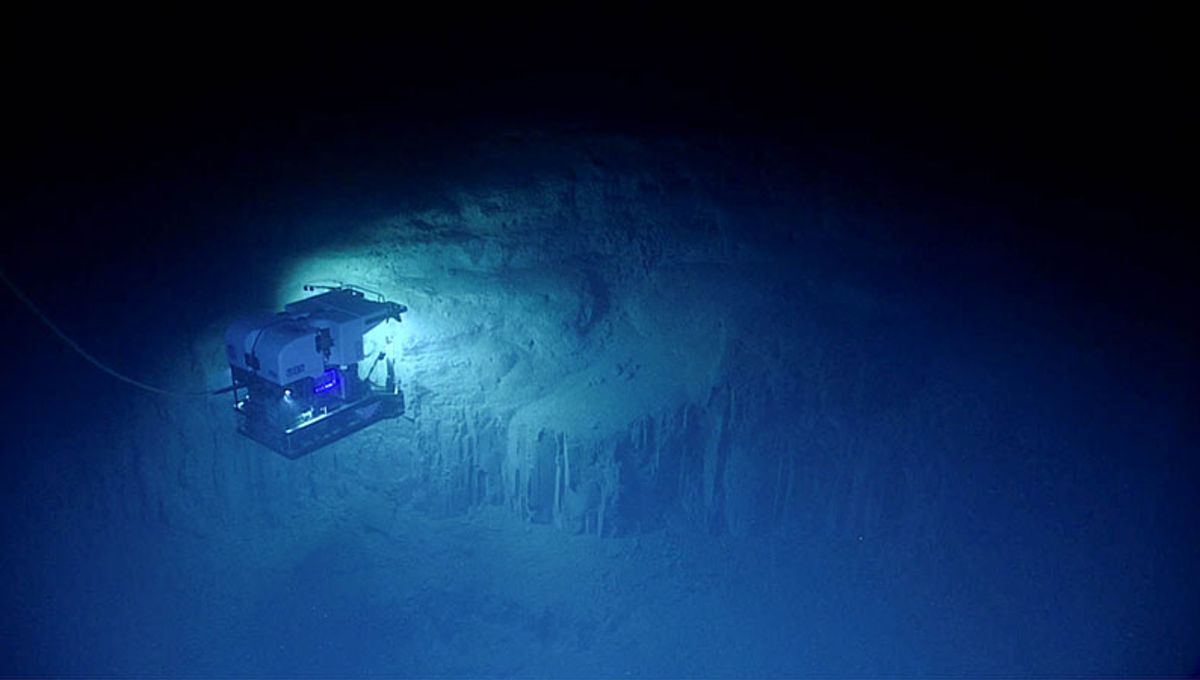
Life in the deep sea can often appear slow, still, and unchanging, like an alien ecosystem that works on a different timescale to the rest of the world. However, research is starting to show that even this environment is constantly restless and even subject to seasonal changes.
Scientists used to think that deep-sea ocean currents were relatively continuous and steady. But the truth is, we know surprisingly little about them since research has long favored the more accessible surface and subsurface waters.
In a new study, scientists led by the UK’s National Oceanography Centre (NOC) are hoping to shed light on this little-known environment. Over four years, researchers tracked the near-seabed currents off the coast of Mozambique in East Africa using 34 deep-sea sensors anchored 2.5 kilometers (1.5 miles) below the surface.
“Seeing how these currents behave is a bit like observing the weather in Manchester – always changing and often surprising. But observing change in the deep sea is really challenging and, until now, we have had a poor understanding of what background conditions are like in the deep-sea,” Dr Ian Kane, co-author of the study from the University of Manchester, said in a statement.
The first-of-their-kind measurements show that the ocean currents near the seabed are not nearly as constant as thought. Instead of finding steady and stable movement, they found the water currents were constantly in a state of flux and dynamism.
“The ocean bottom currents offshore Mozambique are far more variable than we expected. Just like currents in the upper ocean, their intensity changes between seasons and can even flip backwards and forwards over the course of several hours,” added Dr Lewis Bailey, lead study author, currently at the University of Calgary.
The researchers believe topographic features on the seafloor, like submarine canyons and gullies, are one of the many factors that shape the direction and strength of near-bed ocean currents. However, the near-bed currents are highly variable over time, with reversals lasting days to weeks, as well as fluctuations that are linked to tidal cycles.
This suggests that the deep-sea currents are influenced by conditions on the surface. For instance, the study note shows that the Mozambique Undercurrent in deeper waters of up to 1,500 meters (4,921 feet) can be weakened or disrupted by seasonal shifts in the Northeast Madagascar Current, a strong near-surface ocean current that runs between Mozambique and the island of Madagascar.
These discoveries aren’t just important for improving ocean current models; they have real-world consequences. Understanding how deep-sea currents behave helps scientists trace the movement of sediments, nutrients, and even pollutants across the ocean floor, which can influence marine life, carbon storage, and the spread of human-made trash.
“It is important to understand the behaviour and pathways of currents that operate in the deep sea, to determine pathways of natural and human-made particles. This information helps identify where pollution is coming from, which ecosystems it will interact with, and how to make sense of the records preserved in deposits,” explained Dr Mike Clare, lead scientist of the study from the National Oceanography Centre.
The study was published in the journal Nature Geoscience.
Source Link: Deep Ocean Currents Have "Weather" And Seasonal Changes That We're Only Just Learning About